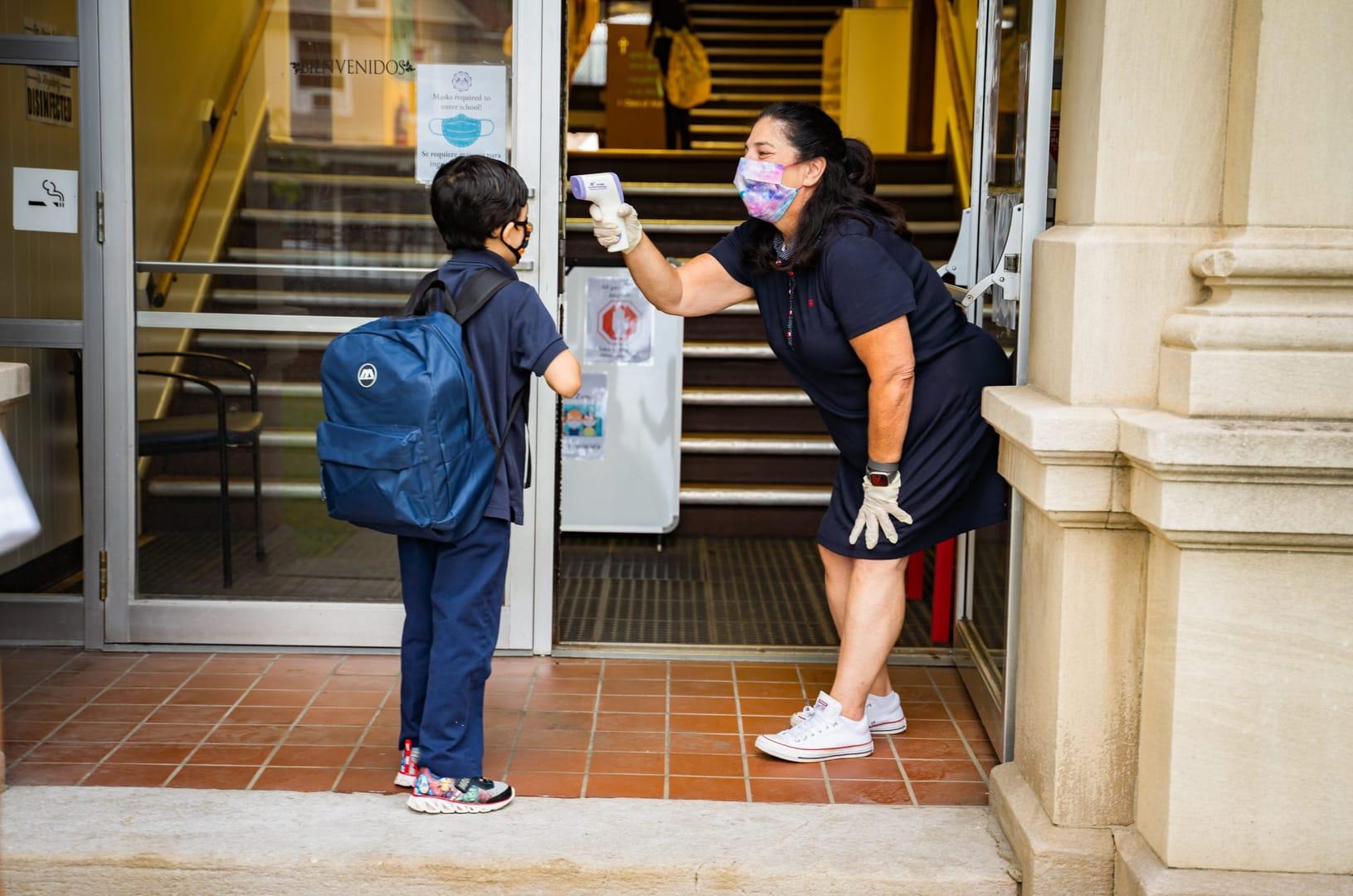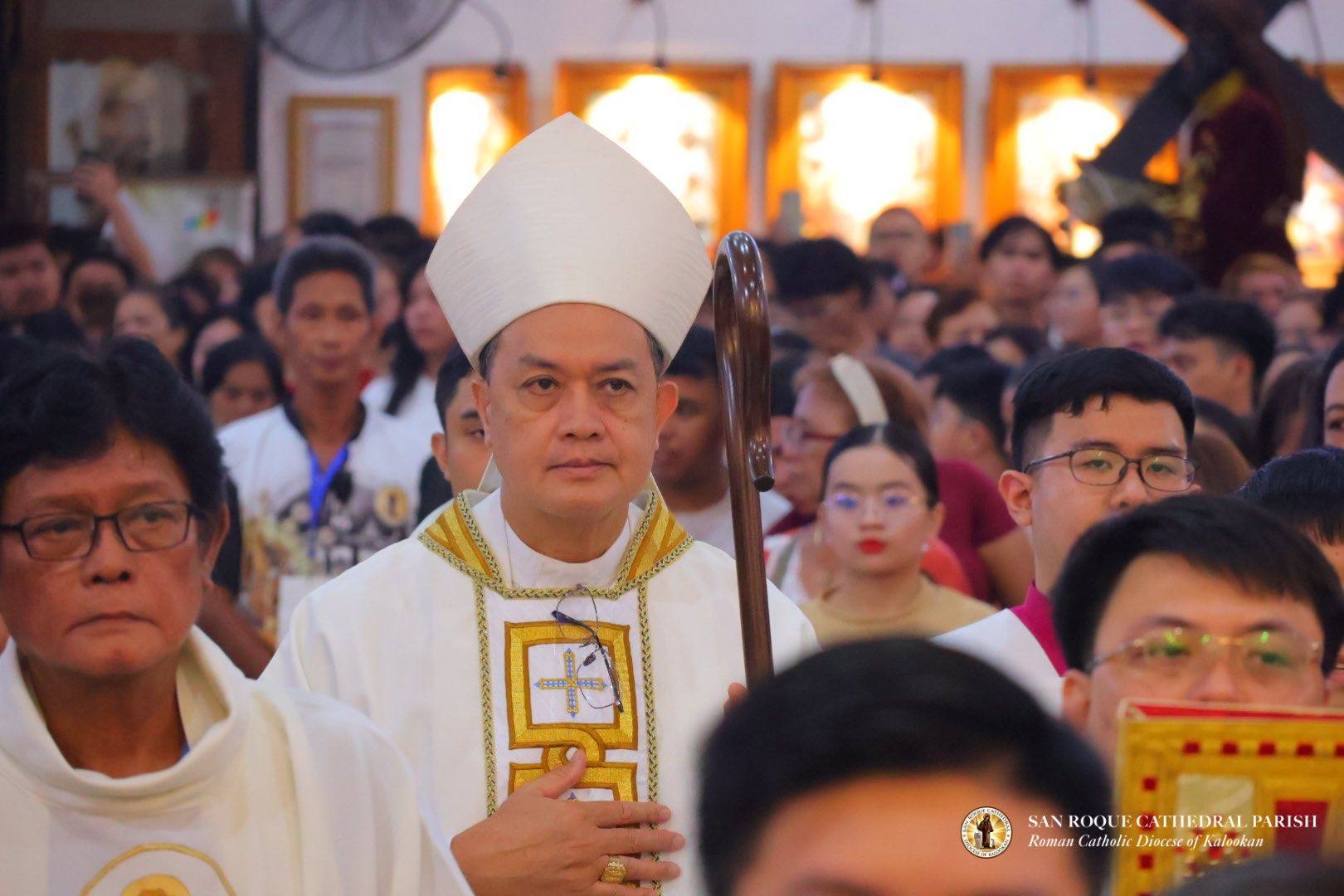WATERFORD, Michigan — Backpack? Uniform? Face mask? Check, check, and check.
The daily routine for Catholic school students in the Archdiocese of Detroit is just another reminder that back to school in 2020 is anything but back to normal.
But while COVID-19 remains an ever-present reality, students, teachers and administrators across the archdiocese’s 86 diocesan and independent schools are eager to return to in-person learning for the first time since March, armed with a laundry list of safeguards, protocols and policies to keep everyone as safe as possible.
“As a teacher, I missed seeing their faces, seeing if the lightbulb is going off, if they are understanding a topic,” Maria Davison, a fourth-grade teacher at Holy Redeemer School in southwest Detroit, told Detroit Catholic. “I just find the interaction with students so much better in person.”
The counties that compose the Archdiocese of Detroit are in phase 4 of Gov. Gretchen Whitmer’s Safe Start Plan, which allows schools to return to face-to-face learning provided proper protocols are in place.
Students and staff began returning to Our Lady of the Lakes, a K-12 school in Waterford, on Aug 25. As the school year begins, everyone is expected to wear face masks in hallways, and in classrooms, plexiglass dividers between desks make it more difficult to pass germs.
“All students at Our Lady of the Lakes and any staff member entering the building must wear a face mask; that’s been the big push from the return-to-school task force,” said Jeanine Kenny, head of school at Our Lady of the Lakes and a member of the Archdiocese of Detroit Catholic Schools Office’s 14-member return-to-school task force.
In addition to face masks, hand sanitizer stations are installed throughout the school, and floor markings help students and staff stay socially distant in common areas, Kenny said.
Because younger children aren’t expected to keep their masks on in the classroom, lower elementary school desks are fitted with plexiglass dividers, Kenny said. Upper school students will be required to wear masks all day, and teachers will wipe down desks and fixtures after each class.
For Our Lady of the Lakes sophomore Bella Asai, the protocols are a small sacrifice to see her friends and teachers again.
“I know we have to wear masks here at Lakes, but it’s such a big place,” Asai said. “With online classes, I couldn’t ask my teachers questions, so I struggled with some lessons. It was hard to arrange Zoom meetings; it’s a lot easier when you have someone helping you in person.”
Across the archdiocese, schools have taken different approaches to the new school year. Even though in-person learning remains the preference, most schools also are preparing hybrid and distance-education plans should the virus’ spread require a return to remote lessons.
Shrine High School and Academy in Royal Oak took the remote-option learning a step further, entering an agreement with the local Emagine Theater — which remains closed because of Gov. Whitmer’s order — to serve as an optional off-site distance-learning center for Shrine students.
Grades seven through 12 will attend traditional classrooms every other day, with days determined by last name. On students’ “off days,” parents can drop them off at the theater, where instructors will be on hand to assist with lessons in a socially distant environment.
“I think we are taking things in a really positive way, trying to be innovative and solve problems,” Shrine principal James Mio said. “Parents returning to work might not be able to help their student access videos or answer questions, so this allows students to receive that in-person instruction, albeit in a unique way.”
Shrine’s class schedule, dress code and meal service will continue at the movie theater, with students reporting to different theaters designated to a particular class. Students will have access to the theater’s Wi-Fi, while Emagine will sell concessions throughout the day.
“We examined the state guidelines and realized we’d have a challenge with social distancing with the size of the building we have,” Mio said. “So, we have a hybrid plan where 50 percent of our students will go to the school building on a given day, and the other half will have the Emagine Theater option.”
As much as schools can prepare, administrators must still brace for the possibility that a COVID-19 outbreak might occur.
To head off outbreaks before they begin, De La Salle Collegiate in Warren is installing thermal imaging cameras at each of its main entrances to monitor students’ body temperatures in real time.
The technology is related to De La Salle’s daily automated health screening app, Clear to Go, which will screen students, staff and visitors to the school. Students with elevated skin temperatures will undergo further screening.
On the low-tech side, schools are implementing a host of prevention techniques, from splitting up lunch hours for different grades, eliminating gathering areas and asking teachers — not students — to move between classrooms.
For students, the new school year is an opportunity to reclaim a small semblance of normal. Much will be different, and plans can change. But walking through the school doors is a sure sign that there will be life after COVID.
“After being stuck in our houses for four months, you realize how grateful you are for everything,” Our Lady of the Lakes sophomore Asai said. “Nothing feels normal; going to the grocery store doesn’t feel normal anymore. But when you go back to school, in class with friends, you have that tiny piece of comfort like, ‘We’re going to be OK.’ Everything will be fine, and we will get back to normal.”
Meloy is a staff writer for Detroit Catholic, the online news platform of the Archdiocese of Detroit.















